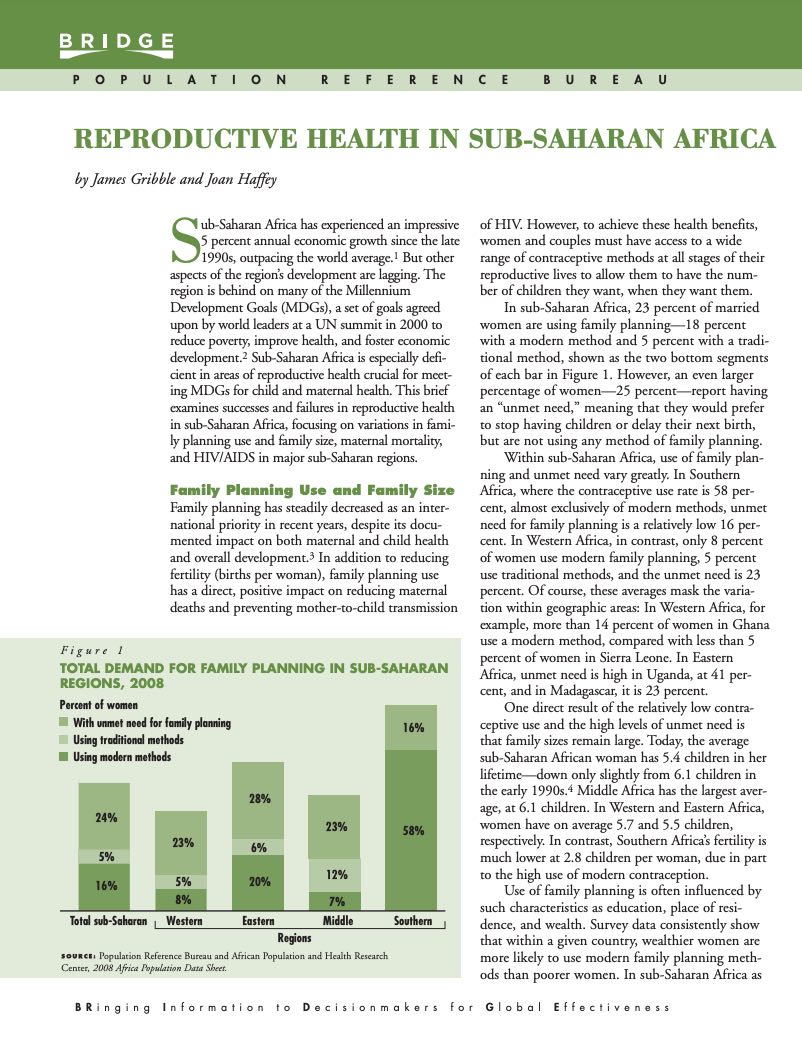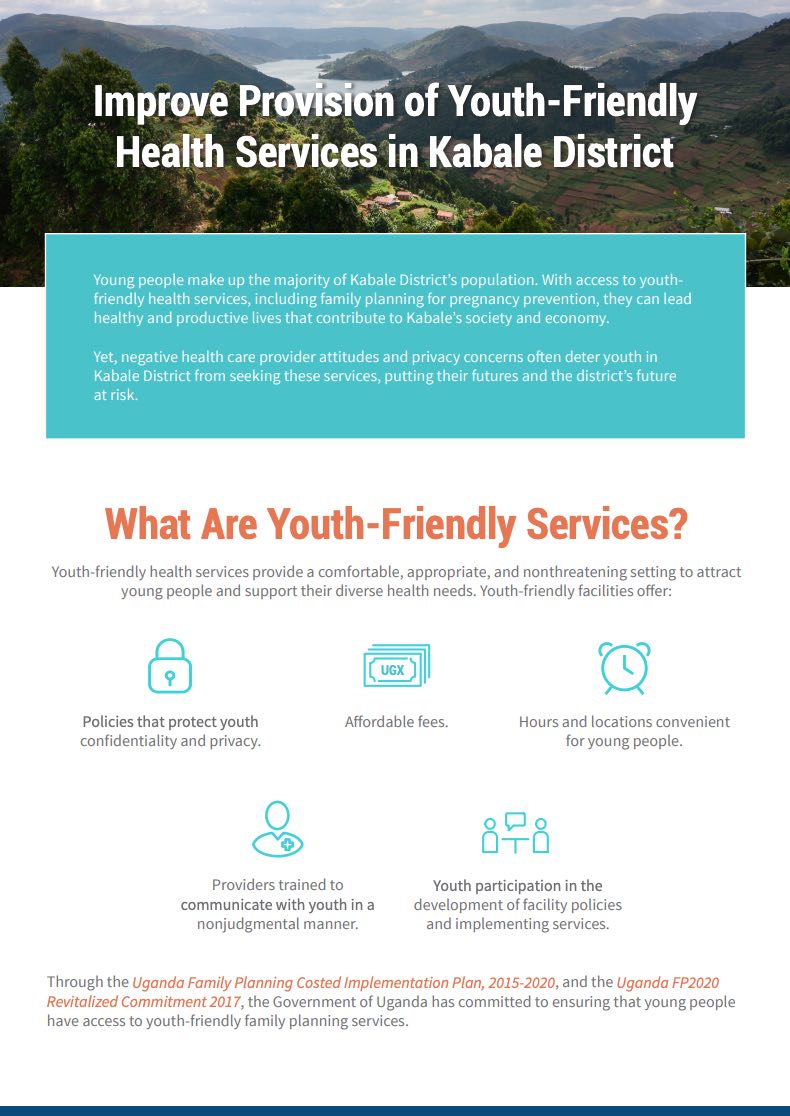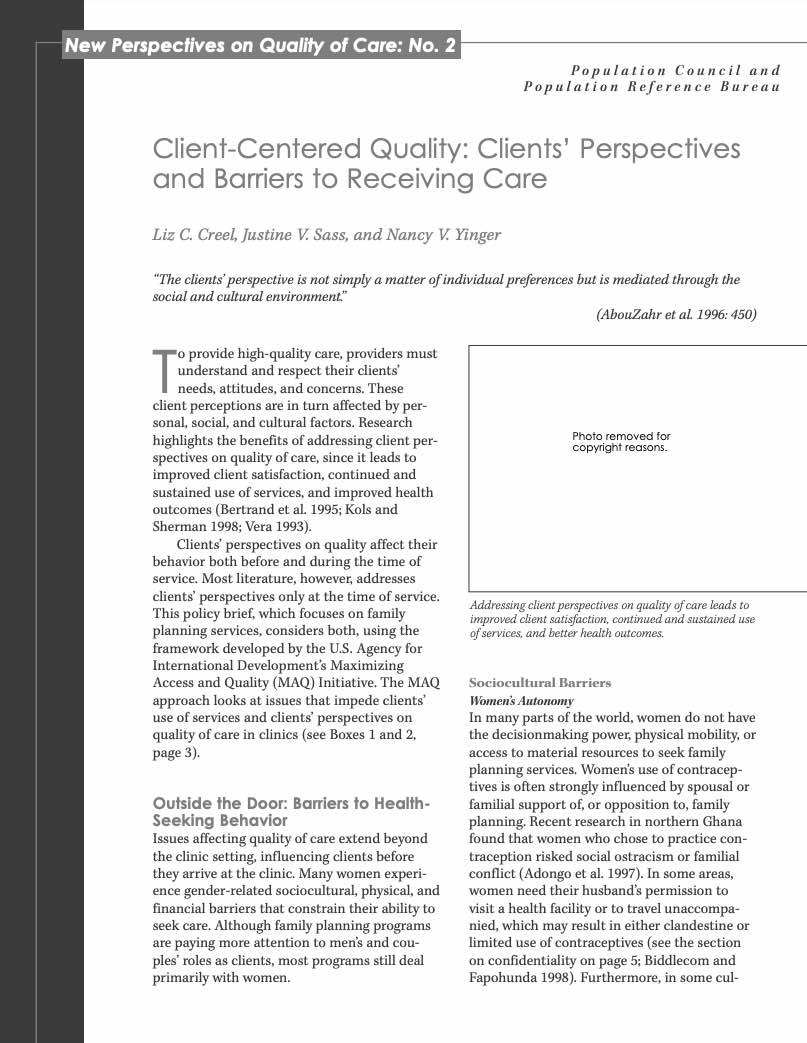Births Outside Marriage Now Common in Many Countries in Europe
(2010) The link between marriage and childbearing has greatly weakened worldwide, evidenced by a sharp rise in births outside marriage in most developed countries.
(2010) The link between marriage and childbearing has greatly weakened worldwide, evidenced by a sharp rise in births outside marriage in most developed countries.

Project: BRIDGE: Bringing Information to Decisionmakers for Global Effectiveness
(2008) Sub-Saharan Africa has experienced an impressive 5 percent annual economic growth since the late 1990s, outpacing the world average.
(2008) Millions of people live in poverty in Latin America, and many young people often face few prospects for a bright future.

Project: Empowering Evidence-Driven Advocacy
Young people make up the majority of Kabale District’s population. With access to youth-friendly health services, including family planning for pregnancy prevention, they can lead healthy and productive lives that contribute to Kabale’s society and economy.
(2009) Recent political developments in Iran highlight the country's demographic and social shifts over the past 20 years. One in three Iranians is between the ages of 15 and 29.

To provide high-quality care, providers must understand and respect their clients' needs, attitudes, and concerns. These client perceptions are in turn affected by personal, social, and cultural factors.

(2014) Countries around the world are paying more attention to inequality as an indicator of social and economic well-being.
(December 2002) Despite major gains in child survival in the last 25 years, more than 10 million children around the world die each year before age 5, often from diseases and conditions that are preventable or easily treated.
(2011) Many studies have recommended integrating reproductive health and HIV services because sexually active individuals have overlapping needs: They are at risk of both unintended pregnancies and HIV infection. A 2009 World Health Organization review of the studies on this issue found that integrating family planning and HIV services leads to higher-quality and better-used services and is cost-effective.